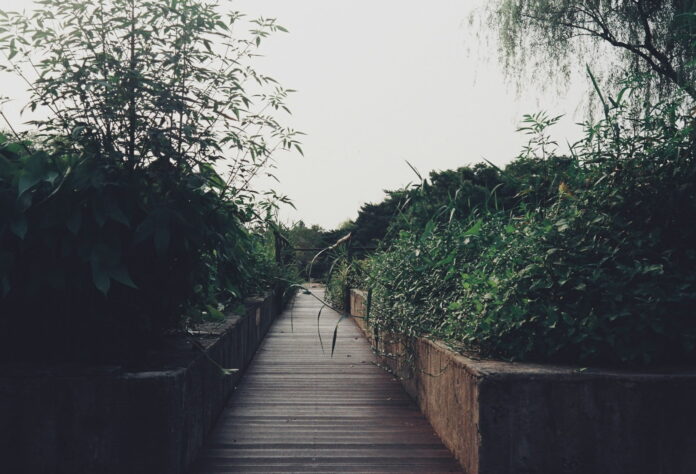In the face of mounting environmental challenges, urban areas are increasingly turning to innovative green infrastructure to address issues such as stormwater runoff, pollution, and habitat loss. Rain gardens emerge as a beacon of hope within this context, offering a practical and aesthetically pleasing solution. These gardens are designed to absorb and filter rainwater, typically from rooftops, driveways, and streets, reducing the burden on sewer systems and mitigating the risk of flooding.
Rain gardens are not only functional but also serve as vital educational tools, demonstrating the importance of sustainable practices in urban settings. By incorporating native plants and natural processes, they provide a glimpse of the potential harmony between urban development and ecological preservation. As cities continue to expand, the integration of rain gardens becomes a critical component in the quest for environmental stewardship and resilience.
The beauty of rain gardens lies in their simplicity and adaptability. They can be installed in residential yards, school grounds, and alongside public buildings, each contributing to a larger network of green spaces that enhance the urban landscape. As community awareness grows, so does the recognition of rain gardens as a cornerstone for urban sustainability, prompting a shift in how we perceive and interact with our built environment.
The Functionality of Rain Gardens in Urban Water Management
Rain gardens play a pivotal role in urban water management by intercepting stormwater runoff before it can overwhelm sewer systems or pollute waterways. They act as natural sponges, with their layered soil and plant composition slowing down water flow and allowing it to percolate into the ground. This process not only reduces the volume of runoff but also filters out contaminants such as heavy metals, oils, and nutrients that would otherwise contribute to water pollution.
The strategic placement of rain gardens can significantly alleviate the pressure on urban drainage systems. During heavy rainfall events, these gardens can absorb a substantial amount of water, decreasing the likelihood of flash floods. By mimicking the natural water cycle, rain gardens restore a balance to urban hydrology, which is often disrupted by impervious surfaces like concrete and asphalt.
Rain gardens contribute to groundwater recharge, an essential process for maintaining the water table and ensuring a sustainable supply of fresh water. In regions facing water scarcity, this aspect of rain gardens becomes particularly valuable, highlighting their role in broader water conservation efforts. As cities grapple with the effects of climate change, the ability of rain gardens to manage water resources adaptively and efficiently cannot be overstated.
Designing Rain Gardens: Best Practices for Maximizing Eco-Friendly Benefits
The design of a rain garden is critical to its success and involves several best practices to maximize its eco-friendly benefits. Firstly, the selection of native plants is paramount. These species are adapted to local conditions and require less maintenance, which reduces the need for fertilizers and pesticides that can leach into the water system. Native plants also provide essential habitat and food sources for local wildlife, fostering biodiversity.
The size and shape of a rain garden are determined by the amount of runoff it needs to manage. Typically, a rain garden should be sized to hold a 1-inch rainfall event, with consideration given to the permeability of the soil and the contributing drainage area. The depth is usually between 4 to 8 inches, allowing for efficient water absorption without becoming a breeding ground for mosquitoes.
Properly engineered soil mixtures are crucial for filtration and water retention. A combination of sand, topsoil, and compost creates an ideal environment for plant roots and microorganisms that break down pollutants. Additionally, the incorporation of an overflow mechanism ensures that the garden can handle excess water during extreme weather events, directing it away from property and preventing erosion.
The Impact of Rain Gardens on Local Wildlife and Habitat Restoration
Rain gardens serve as mini-ecosystems within urban landscapes, providing much-needed refuges for local wildlife. The diverse plant life attracts a variety of insects, birds, and small mammals, creating a dynamic food web. For pollinators such as bees and butterflies, rain gardens are especially crucial as they offer a source of nectar and pollen in areas where such resources may be scarce.
The restoration of native habitats is another significant impact of rain gardens. As urbanization leads to habitat fragmentation, these gardens become stepping stones for wildlife, connecting isolated populations and allowing for genetic exchange. This connectivity is vital for the survival of many species and the overall health of urban ecosystems.
Rain gardens also contribute to the aesthetic value of urban areas, providing pockets of greenery that enhance the quality of life for residents. The presence of wildlife and the beauty of native plants can transform a mundane urban space into a vibrant community asset, promoting well-being and encouraging outdoor activities.
Future Prospects: Expanding the Role of Rain Gardens in Sustainable City Planning
Looking ahead, the role of rain gardens in sustainable city planning is poised for expansion. As awareness of their benefits grows, so does the potential for policy integration and widespread adoption. Urban planners and environmentalists alike envision a future where rain gardens are a standard feature in new developments and retrofits, contributing to a greener, more resilient urban landscape.
Innovations in rain garden design and technology will continue to enhance their functionality and appeal. Smart rain gardens, equipped with sensors and connected to the internet of things (IoT), could optimize water management and provide valuable data for research and development. The integration of rain gardens with other green infrastructure, such as green roofs and permeable pavements, will create multifunctional landscapes that address a range of environmental issues.
The potential for community engagement and education around rain gardens is vast. Schools, neighborhood associations, and local governments can collaborate on rain garden projects, fostering a sense of stewardship and collective responsibility for the environment. As cities become denser and the impacts of climate change more pronounced, rain gardens stand out as a practical, beautiful, and necessary component of urban life.
